Set Review ➟ 42110 Technic Land Rover Defender: Part 2
Last week we had a chance to talk to Milan Reindl, the LEGO designer behind the 42110 Land Rover Defender. Of course we accepted the offer and together with representatives of other RLFM we had a very nice Q&A session.
If you want to see the full session you can do so on Sariel’s YouTube channel. He has published the complete interview.
If you prefer to read the relevant information, read on:
In the first part of our review we drew a lot of attention to the stickers on the model. This was in part because the press release emphasised them. To be honest, the sticker sheet is quite modest compared to the number of elements in this set:
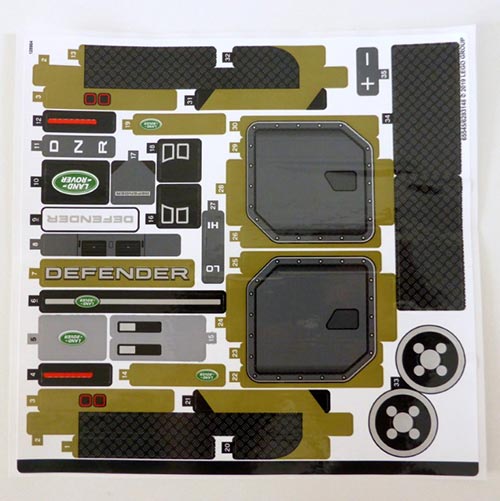
There are a total of 35 stickers on the sheet. As you can see, some of them are composite stickers. In particular, there are two sets of 4 stickers for the interior of the doors. There are also 2 or 3 stickers for the imitation aluminum rails that go over each of the wheel arches (on each side of the hood). Another 3 stickers are used to indicate the functions of the gearbox. And then there are a couple of decals for the lights and for the make (adding the make and model name to the vehicle). In general, the selection of stickers is relatively modest.
Another thing that immediately catches our attention (at least among many Technic fans) are the long blue pins that can be seen on the outside of the model, for example on the top of the new wheel arches. It is true that the colour coding that LEGO uses to facilitate the location and placement of the different types of pins and axles has considerably facilitated the construction. When asked what the age range should be in order to have a set that uses long black (instead of blue) pins, there was no real answer. The color code is implemented and LEGO does not consider the option to change them to achieve a small aesthetic improvement.
The color used in this model is the closest LEGO has to one of the launch colors of this new Land Rover Defender. The official color name of the Land Rover is Metallic Pangea Green. Olive green is the closest color. Of course, there is no information as to whether LEGO will reuse this colour in other LEGO Technic models.
The new wheel arches were created to make the model as close as possible to the original. Solutions built with bricks didn’t really work well and so now there is a new element that could be reused in future models.
Although the original Land Rover Defender you can see in the promotional video and images has 5-spoke wheels, there is a 6-spoke version available in the configurator and that’s why the LEGO version has a 6-spoke wheel.
As shown on our Instagram channel, Instagram channel, the tires are also new. They have a much smaller offset than many of LEGO Technic’s previous large wheels. One consequence of this is that the wheel arch can be much smaller, as the tyre does not need much space to turn while driving.
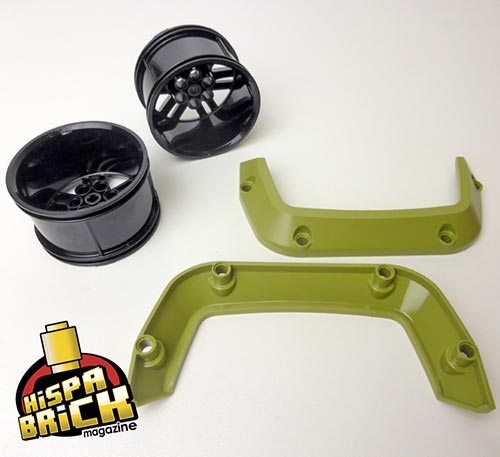
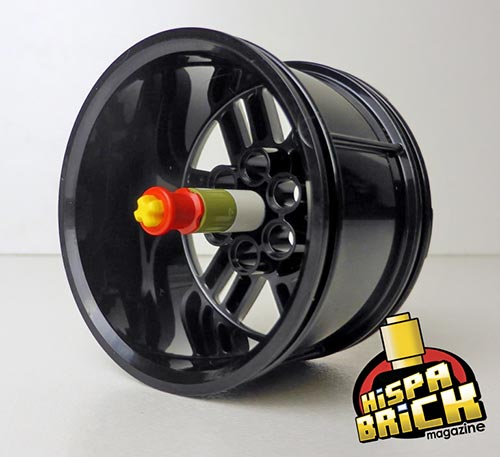
The gearbox—heralded as the most complex yet—is another good engineering feat in this model. The gearbox has 4 speeds plus a low and high gear selector. The same orange gear selector element introduced with the Bugatti Chiron 42083 is used, but this time none of the speeds has been duplicated. There are 4 speeds and a low/high torque selector, resulting in 8 speeds forward as well as a reverse that does not pass through the gearbox.
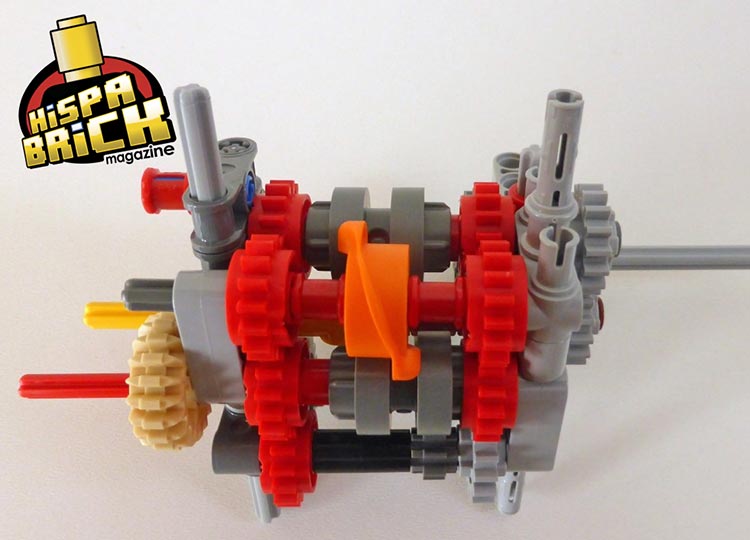
Detail of the orange gear selector inside the gearbox.
The 42110 Land Rover Defender is just 14 grams shy of 2 Kg. The shock absorbers are designed to make sure this weight is handled properly. In addition, the original Land Rover Defender has a small angle of attack, meaning the front of the model is very slightly lower than the back. By using mixed springs in the front this was replicated in the LEGO model.
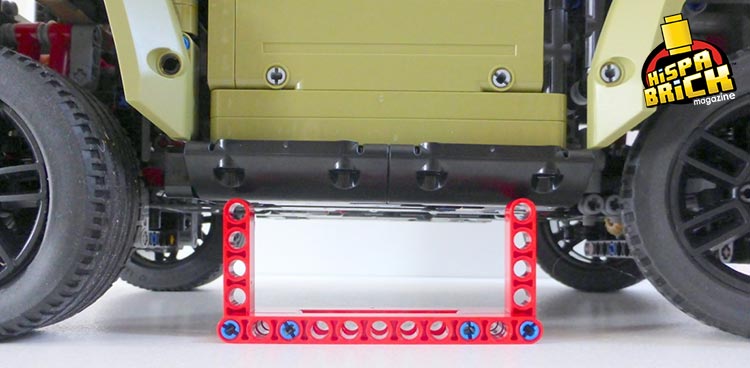
The model leans slightly to the front
The reason why this model uses axles as piston rods and half bushes as piston heads is that the specific Technic cylinder elements would take up too much space in te model. Personally I like this choice, even though is reduces the travel of the pison, as it is much more to scale for a model like this one.

The engine might look like just the thing to remove and install a motor to make the model RC. The fact that the power of that motor would need to go through the whole gearbox means that motorising the model this way is not a good idea. In fact, making this mode remote controlled would probably involve stripping out the gearbox entirely. In other words, it would require major rebuild of the model.
Remember the elements we say in the box on the roof of the model? It turns out those are the elements of the HOG steering:
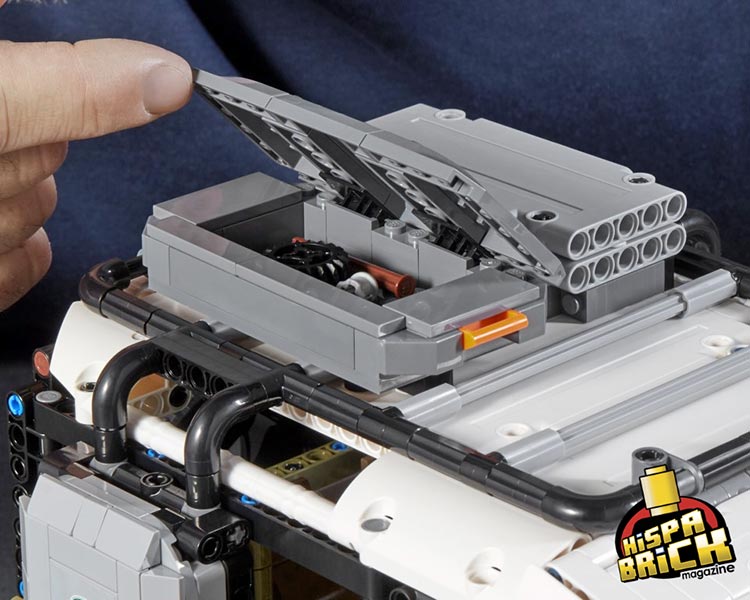
There is still space in the box though. If you remove the roof rack, and want to leave the roof completely “clean” you can store all the small elements that hold the box and the road plates inside this box!
Although the shape of the model (off-roader) doesn’t immediately make you think “supercar”, the way the model is built (independent suspension, complex gearbox and other details) means it does fit into that category. There is no B-model to this set and there is no special packaging (like the Porsche 911 and the Bugatti Chiron). However, the set doesn’t directly fit in the “standard” Technic line-up either.
The bodywork on this model cannot be easily separated from the chassis. However, you can see (almost) all of the gearbox mechanism in the finished model!
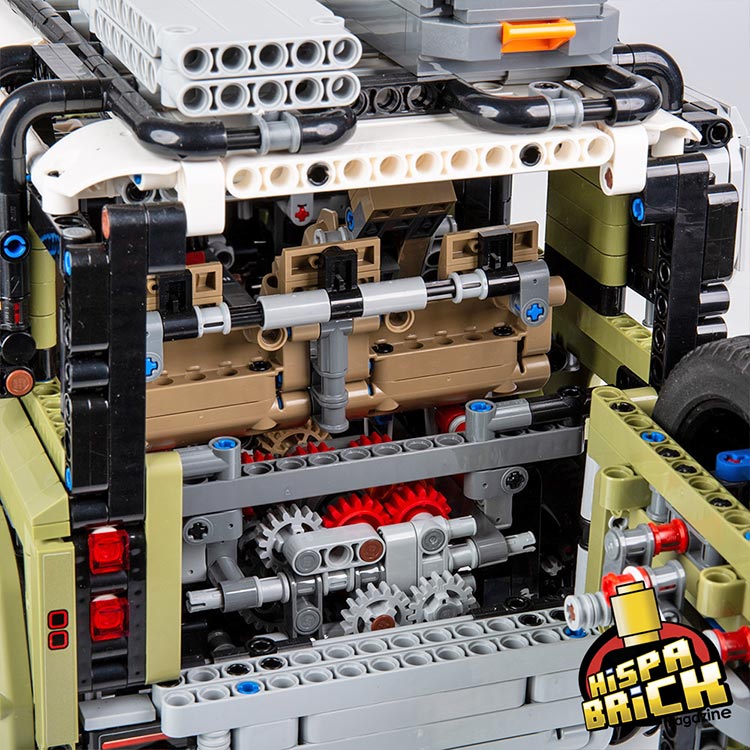
Land Rover rear lights are not round, they are not square, they are squirkles. In order to reproduce this effect (without using stickers!) the designer placed a round 1×1 plate behind a square 1×1 tile. The effect is quite good.
Up next, we’ll be building the model and taking a look inside…
8043